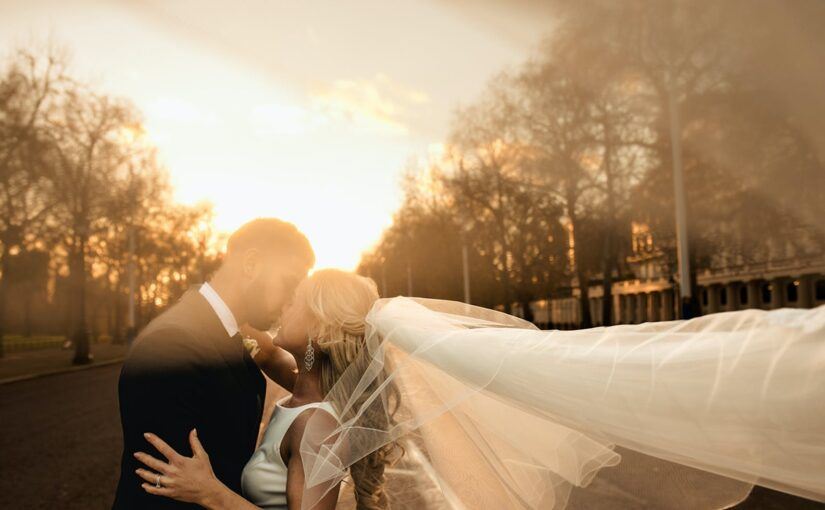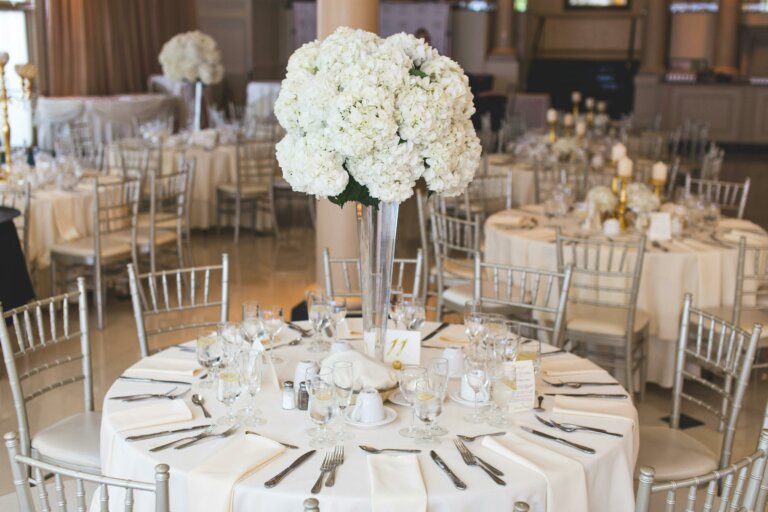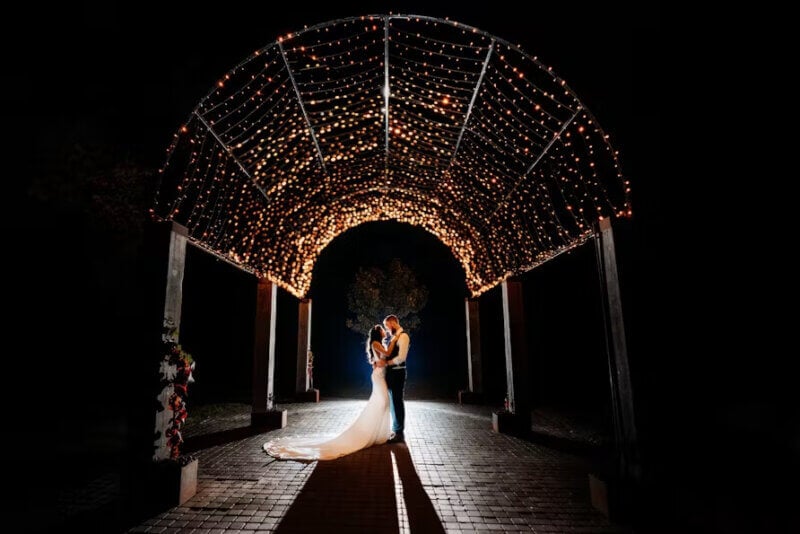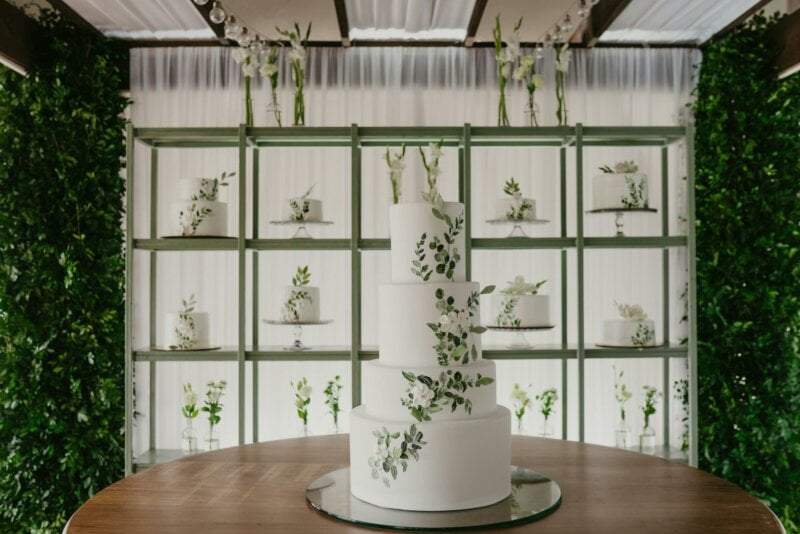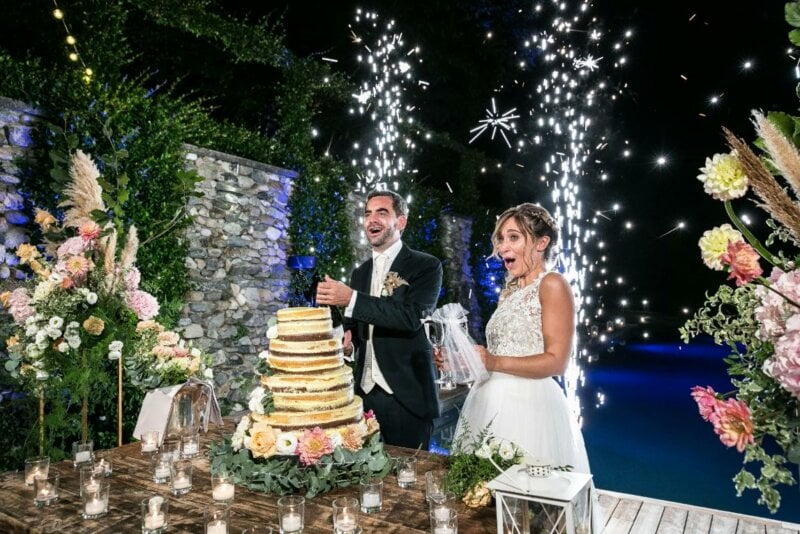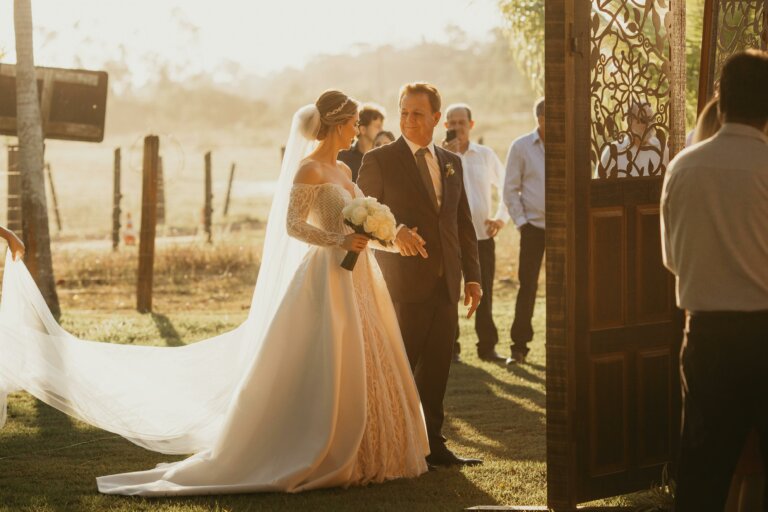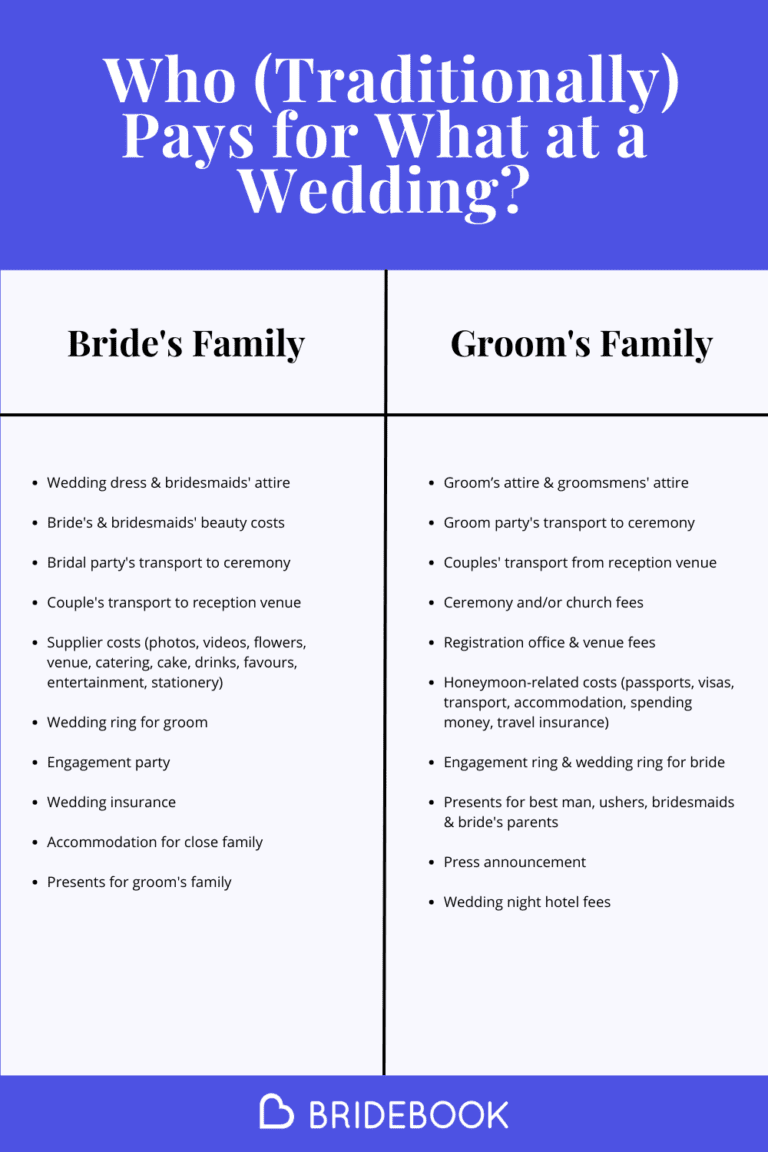Wedding flowers are a major part of the day for most couples: it’s one of the big questions you get from family and friends alike. Have you set the date? Have you got your dress? What flowers are you going to have?
However, the flowers you have at your wedding will often go much further than the bridal bouquet. There are also flowers for the bridesmaids, table centrepieces, gifts for the new in-laws, corsages, flower girls…
But how much do wedding flowers cost? In this post, we’re going to discuss everything from bouquets to boutonnières, including the average cost of wedding flowers, what’s included, and the cost of the most common wedding flowers.
What’s the average cost of wedding flowers?

While not one of the biggest costs to think about during your wedding, in our ultimate wedding budget breakdown you can discover that the average cost of wedding flowers in Australia is between $1,500 – $2,500.
Of course, this figure can vary dramatically depending on what you’re looking for. The bigger and bolder you go, the more you might expect to pay. Similarly, if you’re looking for less flora and more fauna at your wedding, the cost of your flowers will be much lower.
Regardless of your budget, there are plenty of options to get stunning flowers for your wedding. The budget levels can be broken down as:
- Affordable – From $200
- Moderate – $1,200 – $1,800
- Luxury – $1,000 – $3,000
- Super Luxury – From $3,000
These ranges offer a flexible guide, taking into account Australian flower prices and seasonal availability. Opting for locally grown, in-season blooms can help you save on costs while supporting local flower growers. Luxury arrangements typically include custom designs and premium flowers like orchids and roses, often arranged in intricate installations.
What does this cost include?

What exactly is included in the cost of your wedding flowers depends on the vendor, so go in with the right questions to ask your florist before making your final decision.
The average cost will be made up of a package that likely includes:
- 1 x Bridal Bouquet
- 2 x Bridesmaids Bouquets
- 6 x Buttonholes
- 2 x Large Vase Arrangements for the Ceremony
- 1 x Arrangement for the registrar’s table
- 8 x Reception Flowers for 8 tables
Also included in that overall cost will be:
- Consultation
- Design
- Conditioning and prepping the flowers
- Accessories (for example, vases and mirrors)
- Delivery
- Installation
What’s the average cost of a wedding bouquet?

The average cost of a wedding bouquet in Australia is around $200. Generally, the most affordable option is a hand-tied bouquet, which is perfect for a rustic or laid-back wedding style. These bouquets don’t require intricate wiring from the florist and use flowers with longer stems, making them easier and quicker to arrange. In contrast, a cascading bouquet needs specialised wiring to create that beautiful waterfall effect, which can add significantly to the overall cost.
Why do wedding flowers cost so much?

When it comes to choosing your wedding flowers, you’re not going to want the same kind of arrangements you’d have at home day-to-day – it’s your wedding day after all. Whereas usually you might be happy with a bunch of supermarket flowers – or perhaps something from the local florist when you’re feeling fancy – your wedding flowers will be big, bold, beautiful and in keeping with the rest of your day. There are also a lot of individual arrangements needed to fit a very specific brief – which ‘off the shelf’ arrangements might not meet.
Wedding flowers cost so much because:
- You’re receiving a bespoke, personalised service
- They take florists a long time to design
- Delivery and setup can be time-consuming
- Flowers are often fairly pricey anyway
This is all not to say that, even if you have a budget below the average, your flowers won’t be stunning – far from it. However, there are reasons why your specific choices might bump up the price.
What factors affect the cost of wedding flowers?

Almost three-quarters of all couples hire a professional florist when planning their wedding. Flowers may be an expensive part of the big day, but for many couples they’re imperative. However, many factors can affect the cost of your wedding flowers that, if you’re mindful, can keep you within your budget.
Seasonality
Depending on the time of year you’re getting married, certain flowers may be more readily available in Australia than others. The more in-season your flowers are, the more affordable and eco-friendly your wedding arrangements will be. Choosing local, in-season blooms helps support Australian growers and reduces the carbon footprint associated with importing flowers.
Here are some great seasonal flowers in Australia:
- Spring: Ranunculus, Peonies, Sweet Peas
- Summer: Dahlias, Gardenias, Hydrangeas
- Autumn: Roses, Chrysanthemums, Zinnias
- Winter: Camellias, Tulips, Orchids
The type of flowers
Roses may be the traditional wedding flower, but they’re also some of the most expensive, particularly if you’re keen on unique colours. Alternatives, such as hydrangeas offer stunning and colourful blooms but can be more budget-friendly.
Skill and experience
It may seem obvious, but a skilled and experienced florist with decades of experience will cost more than someone new to the industry.
Flower blooms
Believe it or not, another factor that can affect the cost is the physical appearance of your chosen blooms. For example, orchids only have a two-inch stem and will require a faux stem if you want to add them to your bouquet. This is intricate, time-consuming work that can bulk up the price. They do look beautiful though…
Sources
Are your chosen flowers available from Australian suppliers? Importing flowers from other regions, especially during off-seasons, can increase costs due to shipping fees and supply chain challenges. In contrast, Australian-grown flowers are often more affordable and readily available, especially if you choose blooms that are in season.
Opting for locally grown flowers not only supports Australian growers but also reduces the environmental impact associated with long-distance imports.
Accounting for delicate flowers
When you order arrangements that include delicate flowers, there is always going to be the risk that they’re damaged, not open, or past their prime. If you ask for a bouquet that includes a dozen roses, your florist will have to over-order to make sure to account for these issues.
What to consider when choosing your wedding flowers

Choose a bouquet that fits the size and shape of your dress (if you’re wearing one). For example, the bouquet should be in proportion to the dress – the bigger the dress, the bigger the bouquet. You don’t want a slender, figure-hugging dress to be hidden by a large bouquet, after all.
Another option to consider for your wedding is silk flowers. While silk flowers used to be much cheaper than real ones, advancements in manufacturing have brought their prices closer to or even above that of fresh blooms. The benefit is that modern silk flowers can look incredibly realistic. If you want a natural touch without worrying about wilting, preserved flowers are another excellent choice. These are real blooms that have been carefully treated to maintain their beauty, offering the authenticity of fresh flowers with the durability of silk.
Choosing silk or preserved flowers is a smart option if you’re concerned about unpredictable weather, have allergies like hay fever, or want a lasting keepsake from your big day. Just keep in mind that artificial and preserved flowers won’t provide the natural scent of fresh blooms. To create a memorable fragrance, consider picking a floral perfume that will forever be linked to your wedding day.
Plan your wedding today with Bridebook
Are you starting your wedding planning journey? Sign up to Bridebook and begin planning your wedding today.
And if you’re looking for ways to save money on your wedding flowers, we’ve got plenty of budget-friendly ideas and inspiration to help you keep costs down.
You Might Also Like…
- The Ultimate Australian Wedding Budget Breakdown
- How Much Does a Wedding Venue Cost in Australia?
- How Much Does a Wedding Catering Cost in Australia?
- How Much Does Wedding Photography Cost in Australia?

